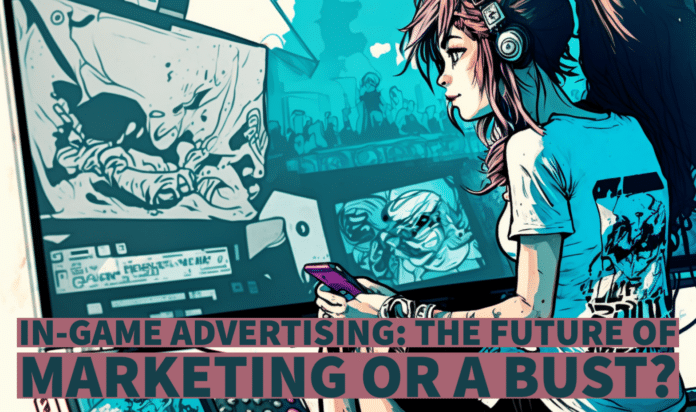The world of video games and advertising has changed dramatically in recent years, with big brands and marketers taking note of the massive success of popular games like Fortnite and using them to target specific audiences with their advertising. This is a big shift from the past, where video games were seen as just a form of entertainment for children and teenagers, and marketers were hesitant to invest in this type of advertising. But now, with more than 80% of gaming adults saying they would be interested in seeing a brand advertise within a game, the trend has shifted towards in-game advertising.
So, what is driving this trend towards in-game advertising and why are brands so interested in using video games to reach their target audience? To answer these questions, it’s important to understand what makes video games so appealing to consumers and how they can be used to reach them.
The Psychology of Video Games
Video games are a multi-billion dollar industry, and they have a massive following of avid consumers. Playing games triggers a variety of psychological and physiological responses, from increasing focus and memory to reducing stress and tension. Video games also help to develop important skills, such as problem solving, critical thinking, cooperation, and creativity. This combination of psychological benefits and skill development is what makes video games so appealing to consumers.
The Fortnite Phenomenon
Fortnite’s rise in popularity has not gone unnoticed by brands and marketers. With over 250 million registered players, Fortnite is the biggest game in the world, and it has become a major source of entertainment for a huge number of people. Brands have taken advantage of this and started using video games like Fortnite to reach specific audiences with their advertising.
In-game advertising in Fortnite can take many forms, from sponsoring individual players and content creators, to creating branded events and live experiences, to running ads in pre-game content and in between matches. Brands can also create and run their own in-game ads, which allow them to place ads within the game world, making the ads part of the environment and promoting the brand in a more immersive way.
The Key to Success in In-Game Advertising
While gaming audiences are very aware of brands that advertise in video games, this does not mean that they are necessarily interested in the brand. Gaming is a personal medium that often involves a sense of community, so if a gamer is not feeling a brand, it doesn’t matter if it is a big brand with a huge advertising budget. This is why the key to success in in-game advertising is to create content that appeals to the gaming community on a personal level, so that the ad content resonates with the audience.
Examples of successful in-game advertising in Fortnite include Bootstrapped by Ninja, Shut Up & Dance, and Out of the Park. Each of these campaigns leveraged the game and its community to create content that resonates with gamers and drives brand awareness.
The Future of In-Game Advertising
There are still some questions about its future and whether or not it will become the next big thing in marketing. While some believe that in-game advertising is the future of marketing and will continue to grow and evolve, others are more skeptical and see it as a fad that will eventually fade away.
One of the biggest challenges facing in-game advertising is the issue of ad inventory. As more brands and marketers enter the world of in-game advertising, the demand for ad inventory is increasing, and it’s not always clear where this inventory is located. Some argue that this is a problem that will eventually lead to a saturation of in-game ads, which will turn off consumers and cause the trend to fade. However, others believe that the growth of the video game industry will lead to the development of new ad inventory, and that the demand for in-game advertising will continue to grow.
Another challenge facing in-game advertising is the issue of ad relevance. The success of in-game advertising depends on creating content that resonates with gamers, but this can be difficult if the ad is not relevant to the audience. This is why it is important for brands and marketers to understand their target audience and create content that appeals to them.
Also, the majority of in-game ads are still located in free-to-play or mobile games, not the premium console titles that attract most of the gamers’ attention. This confusion about what in-game advertising is can be frustrating for brands that are looking for a more significant, immersive experience for their ads.
One of the main challenges that the in-game ad industry faces is a lack of console inventory. Currently, in-game ad firms such as Bidstack and Anzu produce bespoke ads inside console titles, but not the programmatic ads that make up the majority of their inventory. Both Xbox and PlayStation have reportedly started to develop their in-game ad departments, and in-game ad companies like Bidstack and Anzu are working toward offering console inventory, but it is still a slow process.
Another challenge facing the in-game ad industry is a data gap that prevents brands from fully buying into the concept. Marketers are eager to know more about in-game advertising and the returns they can expect, but full transparency about in-game ad performance is still several years out. In-game ad measurement standards have improved in recent years, but it will still take time to provide the kind of data that advertisers need to make informed decisions.
In-game ad companies also face the challenge of educating brands about the space. Brent Koning, an evp and global gaming lead at Dentsu, points out that for sports games, advertising is already native for consumers, but for other genres of video games, advertising is still seen as non-traditional, which makes it harder for marketing teams to sign off on it.
Despite these challenges, the in-game ad industry is still poised for growth in 2023. Jude O’Connor, the CRO of Bidstack, predicts that industry-wide in-game ad sales will double in 2023, from an estimated $20 million to $40 million. But the in-game ad industry will have to work on overcoming these challenges if they want to achieve their growth potential.
.










